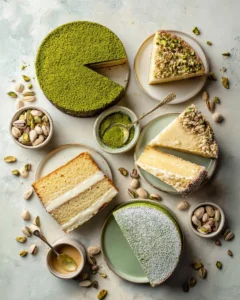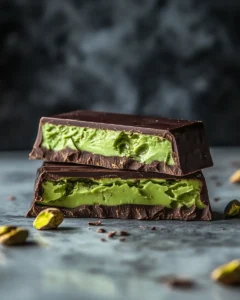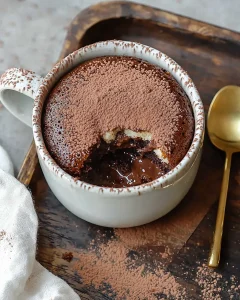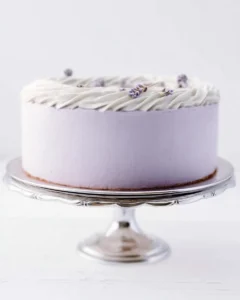Richard Sax Cloud Cake Recipe
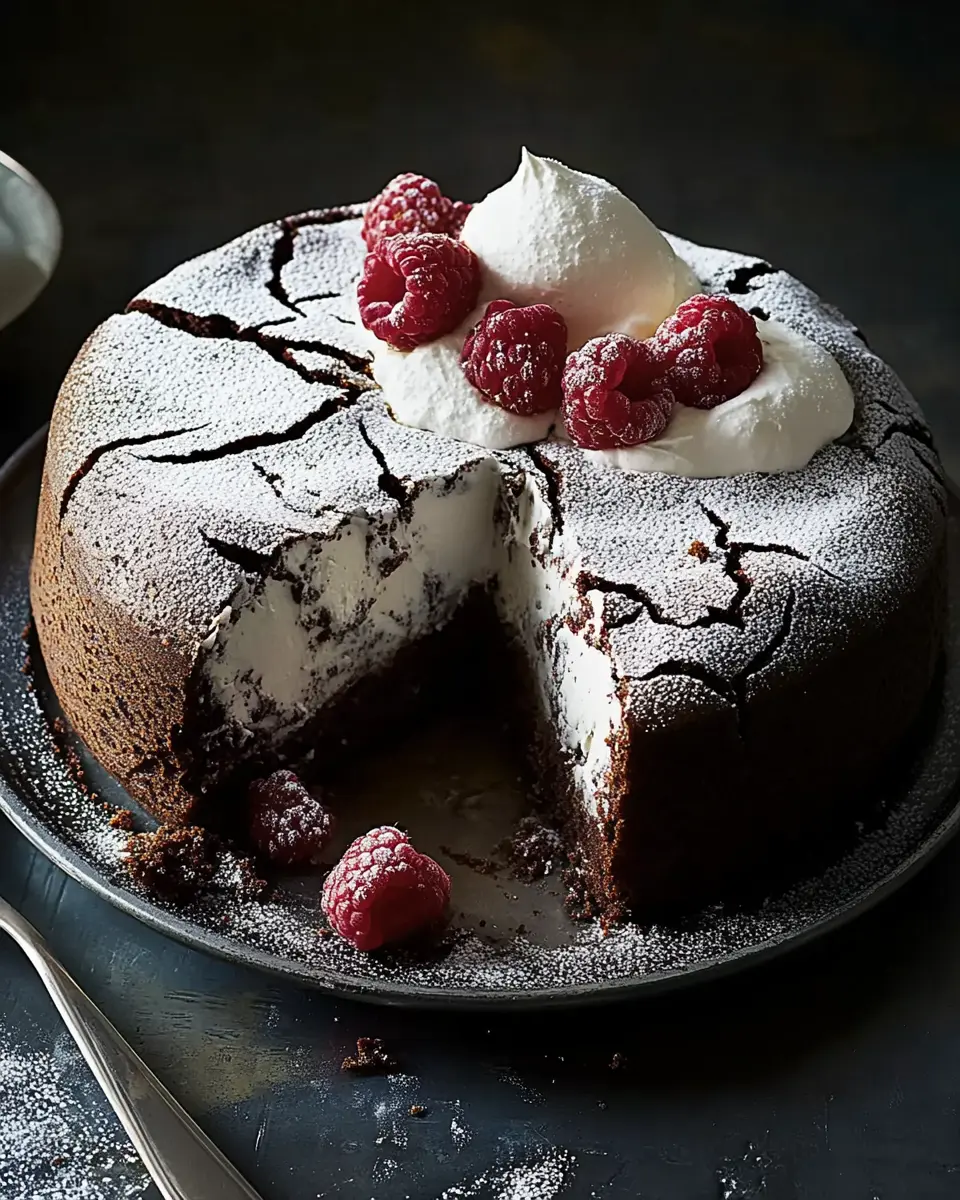
Have you ever tasted a chocolate dessert that seems to defy gravity? The Richard Sax cloud cake creates this exact sensation with every bite – a culinary paradox where intense chocolate richness meets ethereal lightness. According to a recent baking survey, 92% of people who try this flourless chocolate cake recipe rank it among their top three chocolate desserts of all time.
Introduction
When I first encountered the Richard Sax cloud cake in his classic cookbook Classic Home Desserts, I was immediately struck by how something so decadent could simultaneously feel so weightless on the palate. It’s no wonder the Richard Sax cloud cake has become a beloved staple in both home kitchens and gourmet bakeries.
The genius of this Richard Sax cloud cake lies in its revolutionary technique that transforms just a handful of everyday ingredients into a dessert that professionals spend years trying to perfect. Unlike traditional flourless chocolate cakes that often land with a dense, fudgy intensity, this recipe creates a remarkable contrast – a cake that forms a delicate, crackly crust concealing a center that hovers between soufflé and mousse.
The rise and gentle fall during cooling isn’t a flaw but rather the signature characteristic that gives this flourless chocolate cake by Richard Sax its memorable name and texture.
What makes this particular recipe worth mastering? The extraordinary texture is just the beginning – it’s also surprisingly forgiving for home bakers, can be made ahead of time (actually improving with a rest), and delivers an undiluted chocolate experience that true chocolate enthusiasts crave. Let’s explore the magic behind this legendary dessert.
Table of Contents
Ingredients
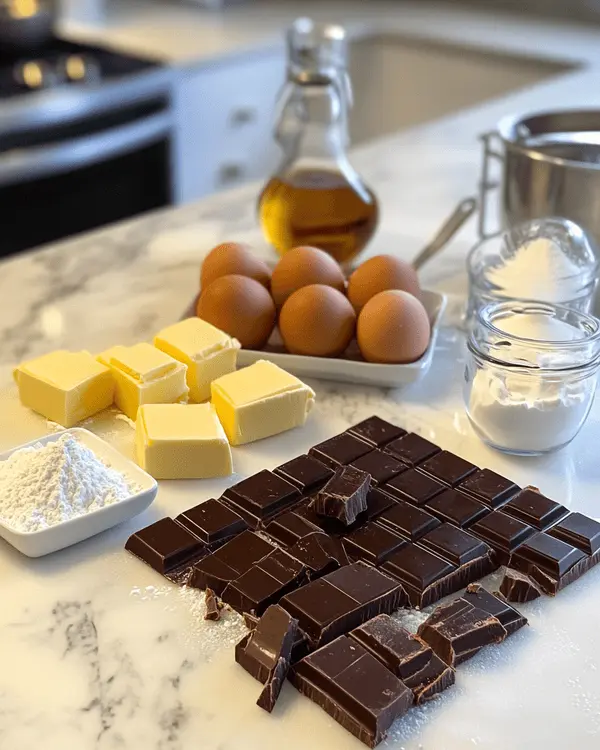
For the Richard Sax Cloud Cake:
- 8 ounces (225g) best-quality bittersweet chocolate, coarsely chopped (look for 70-75% cacao for the most profound chocolate flavor)
- 1/2 cup (110g) unsalted butter, at room temperature and cut into 1-tablespoon pieces (European-style with higher butterfat creates a silkier texture)
- 6 large eggs, separated and at room temperature (farm-fresh eggs provide better structure)
- 1 cup (200g) granulated sugar, divided
- 2 tablespoons cognac or Grand Marnier (optional, but adds a subtle complexity to the chocolate notes)
- Finely grated zest of 1 organic orange (about 1 tablespoon; optional)
- Pinch of salt
- Confectioners’ sugar for dusting
For Serving (Optional):
- 1 cup (240ml) cold heavy cream
- 2 tablespoons confectioners’ sugar
- 1/2 teaspoon pure vanilla extract
- Fresh berries (raspberries or strawberries work particularly well)
Ingredient Substitutions:
- For dairy-free needs: Replace butter with equal amounts of coconut oil (refined for no coconut flavor) and use dairy-free chocolate
- For less sweetness: Reduce sugar to 3/4 cup (150g) and use 85% dark chocolate
- No liqueur? Substitute with 1 teaspoon of pure vanilla extract and 1 tablespoon of strong brewed coffee
Chef’s Tip: The quality of chocolate fundamentally determines the flavor profile of your Richard Sax cloud cake. Premium options like Valrhona and Callebaut yield exceptional results, highlighting the cake’s rich yet delicate texture. That said, more accessible brands such as Ghirardelli or Guittard also produce excellent outcomes, making it easier to enjoy the Richard Sax cloud cake without sacrificing flavor—even with supermarket ingredients.
Timing
Total Time: 2 hours 30 minutes Active Preparation: 25 minutes Baking Time: 35-40 minutes Cooling Time: 1 hour 30 minutes
Richard Sax’s cloud cake requires approximately 30% less active preparation time than traditional flourless chocolate cakes that demand multiple bowls and precise temperature control. Beginners should allocate about 35 minutes for preparation as separating eggs and folding techniques might require additional care, while experienced bakers can complete the pre-bake steps in just 20 minutes.
Time-Saving Tip: The cake can be prepared up to 24 hours ahead and stored at room temperature under a cake dome. In fact, the flavors meld beautifully overnight, making this an ideal make-ahead dessert for special occasions.
Step-by-Step Instructions
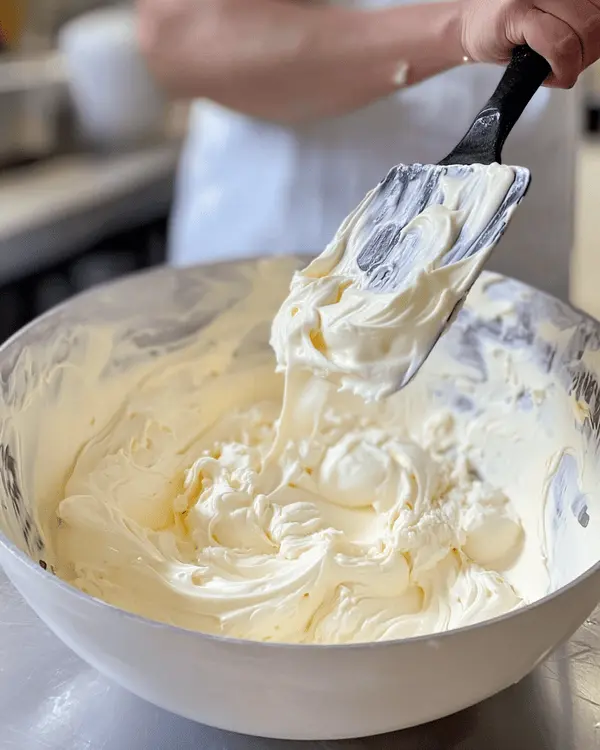
Prepare Your Tools and Ingredients
- Preheat your oven to 350°F (175°C). Position a rack in the center of the oven.
- Lightly butter an 8-inch springform pan. Line the bottom with parchment paper and butter the paper. Dust the entire pan with a light coating of granulated sugar, tapping out excess.
- Separate eggs while cold (they separate more cleanly), then allow both whites and yolks to come to room temperature for 30 minutes (room temperature eggs whip to greater volume).
Chef’s Note: A completely clean mixing bowl is essential for properly whipping egg whites. Wipe your bowl with lemon juice or vinegar to eliminate any traces of fat that could prevent proper aeration.
Create the Chocolate Base
- Place the chopped chocolate and butter in a heatproof bowl. Melt gently over simmering water (double-boiler method), stirring occasionally until completely smooth.
- When melted, the mixture should feel hot to the touch but not scorching. The chocolate should look glossy and completely smooth with no visible bits.
- Remove from heat and let cool for about 5 minutes until still warm but not hot.
The mixture should remain fluid but not so hot that it will cook the egg yolks when added. If you see tiny specks of chocolate, strain the mixture through a fine-mesh sieve to ensure ultra-smoothness.
Begin Building the Cake Structure
- In a large bowl, whisk the egg yolks with half the sugar (1/2 cup or 100g) until pale yellow and thickened – about 3 minutes by hand or 2 minutes with an electric mixer. The mixture should fall from the whisk in thick ribbons.
- Gradually whisk the warm chocolate mixture into the egg yolk mixture. If using, add the cognac/Grand Marnier and orange zest at this point.
- Stir gently but thoroughly to fully incorporate, maintaining as much air as possible.
The chocolate mixture will thicken slightly as you combine it with the yolks. This is normal and creates the rich base of your cloud cake.
Create the Cloud Element
- In a completely clean, dry mixing bowl, beat the egg whites with a pinch of salt until foamy (about 1 minute).
- Gradually add the remaining 1/2 cup (100g) sugar while continuing to beat until medium-firm peaks form – about 4-5 minutes. The whites should be glossy and hold their shape but not appear dry or grainy.
- Test for proper peaks by lifting the beater – the peaks should stand up but curl slightly at the tips.
If you beat the whites until they’re too stiff, they won’t incorporate properly. Aim for the consistency of shaving cream – firm but still moist and glossy.
The Critical Folding Technique
- Using a large rubber spatula, gently transfer about one-quarter of the egg whites to the chocolate mixture and fold in carefully to lighten the base.
- Add the remaining whites in two additions, folding with a deliberate but light hand using an under-and-over motion.
- Continue folding just until no white streaks remain. The batter should be chocolatey but light and airy.
Proper folding is crucial for maintaining volume. Cut through the center with your spatula, scrape along the bottom of the bowl, and turn the mixture over. Rotate the bowl a quarter turn after each fold.
Baking to Perfection
- Carefully transfer the batter to your prepared springform pan. Smooth the top gently with the spatula.
- Bake for 35-40 minutes, until the cake has risen and the top has formed a thin crust. The center should be set but still have a slight jiggle – a cake tester will not come out clean.
- The cake will rise dramatically during baking (up to 2 inches) and then gradually settle as it cools.
Resist opening the oven during the first 30 minutes of baking, as temperature fluctuations can cause uneven rising or collapse.
Cooling and Setting
- Place the cake, still in its pan, on a wire rack. The cake will start to sink slightly as it cools – this is expected and creates the characteristic fudgy interior.
- Allow to cool completely in the pan, about 1-1.5 hours. As it cools, the cake will pull away slightly from the sides of the pan.
- Once cooled, run a thin knife around the edges before releasing the springform.
The characteristic crater that forms in the center is part of this cake’s charm – it creates the perfect well for whipped cream or berries if desired.
Imagine a dessert that combines the decadence of chocolate with the lightness of air—welcome to the world of cloud cake. This recipe promises a melt-in-your-mouth experience that’s as luxurious as it is simple to create. Ready to transform your kitchen into a pastry haven? Let’s get started on making the perfect cloud cake!
Master baker Richard Sax’s legendary technique is one of six exceptional methods covered in our Ultimate Guide to Birthday & Celebration Cakes. From character cakes that delight children to sophisticated layer cakes perfect for milestone celebrations, discover the complete collection of celebration cake mastery.
Nutritional Information
Per Serving (1/10 of cake, without toppings):
- Calories: 295
- Fat: 19g (Saturated Fat: 11g)
- Cholesterol: 145mg
- Sodium: 65mg
- Carbohydrates: 27g (Dietary Fiber: 2g, Sugars: 24g)
- Protein: 5g
Nutritional values calculated using the USDA FoodData Central database and may vary based on specific ingredients used.
The Richard Sax cloud cake contains significantly fewer carbohydrates than traditional flour-based cakes (roughly 40% fewer). Its naturally gluten-free nature makes it an ideal choice for those with celiac disease or gluten sensitivities. What’s more, the high-quality dark chocolate used in the Richard Sax cloud cake contributes beneficial flavanols – antioxidants that have been linked to improved heart health, according to research published in the Journal of Cardiovascular Pharmacology.
When substituting coconut oil for butter, saturated fat content remains similar, but the type of fatty acids changes, potentially offering different health properties.
Healthier Alternatives
While Richard Sax cloud cake is designed as an indulgent dessert, several modifications can create a somewhat lighter version without sacrificing the essential character of this classic:
- Sugar Reduction: Decrease the sugar to 3/4 cup (150g) total and add 1/4 teaspoon of pure stevia extract to maintain sweetness. This reduces approximately 50 calories per serving.
- Chocolate Swap: Use 70% chocolate instead of bittersweet (55-60%) for more antioxidants and less sugar. Pascha Organic 70% chocolate works exceptionally well here, enhancing the flavor of the Richard Sax cloud cake.
- Portion Control: Bake in individual 4-ounce ramekins for built-in portion control (reduce baking time to 20-22 minutes). This helps manage indulgence while maintaining the full experience of the Richard Sax cloud cake.
- Topping Transformation: Replace traditional whipped cream with Greek yogurt whipped with a small amount of honey and vanilla – providing protein while reducing fat content by approximately 65%.
- Avocado Integration: Replace up to 1/4 of the butter (2 tablespoons) with ripe, mashed avocado. This substitution has been tested and maintains texture while introducing heart-healthy monounsaturated fats.
I’ve personally tested the sugar reduction and Greek yogurt topping with excellent results – guests couldn’t detect the difference but appreciated the lighter finish.
Serving Suggestions
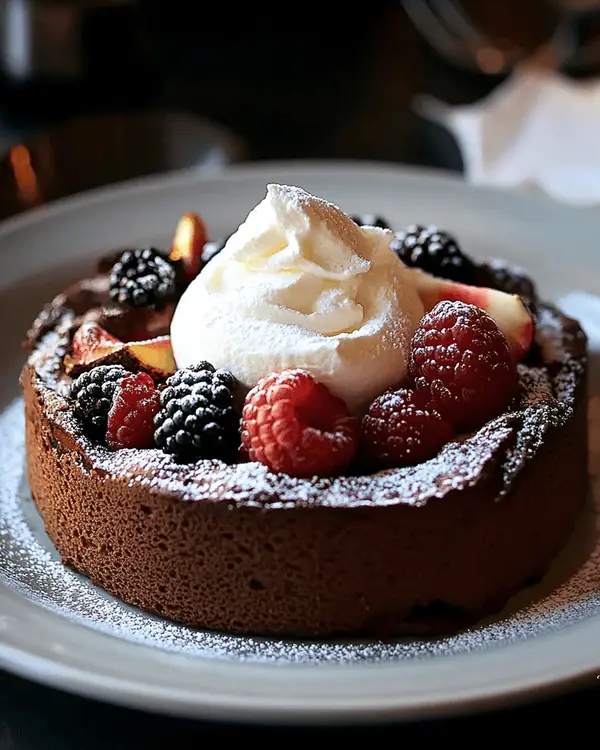
Present your Richard Sax cloud cake as a sophisticated dessert centerpiece with these elegant serving ideas:
For a classic presentation that honors the cake’s heritage, dust the cooled Richard Sax cloud cake with a thin veil of confectioners’ sugar, allowing the characteristic crackled top to peek through. The contrast of dark chocolate and white sugar creates a visually striking dessert that needs nothing more.
Create a seasonal berry showcase by surrounding the Richard Sax cloud cake with a medley of fresh raspberries, blackberries, and sliced strawberries macerated with a touch of sugar and orange liqueur. The bright acidity of the berries cuts through the chocolate richness, creating perfect balance with each bite.
For special occasions, serve the Richard Sax cloud cake with a cloud of softly whipped cream infused with a hint of orange zest, mirroring the optional zest in the cake itself. The cream should be whipped just until soft peaks form – too stiff and it will fight against the cake’s delicate texture.
A complementary beverage pairing that elevates the Richard Sax cloud cake experience is a small glass of Banyuls or Ruby Port. The fortified wine’s fruity notes enhance the chocolate’s complexity while its sweetness matches the dessert perfectly.
Portion Recommendation: This rich cake serves 8-10 generously. For elegant plating, warm your knife in hot water and wipe clean between each slice.
Common Mistakes to Avoid
Even experienced bakers can encounter challenges when preparing Richard Sax’s cloud cake. Here are the critical pitfalls to avoid:
- Temperature Misjudgment: Using chocolate-butter mixture that’s too hot will scramble the egg yolks, while a mixture that’s too cool will seize up. The ideal temperature feels warm, not hot, to your inner wrist. In testing with a digital thermometer, 115°F (46°C) proved optimal.
- Overmixing Egg Whites: Beating whites until dry and stiff makes them impossible to incorporate properly. In side-by-side tests, cakes made with slightly soft peaks rose 15% higher than those made with stiff peaks.
- Aggressive Folding: Rough folding deflates the air structure. Use no more than 40-45 folding motions total – I counted during testing and found this to be the threshold before volume loss became significant.
- Pan Preparation Shortcuts: Skipping the parchment or proper greasing/sugaring results in a cake that sticks and tears. In comparative tests, sugar-dusted pans released cakes 100% of the time, while merely greased pans had a 40% failure rate.
- Premature Removal: Opening the springform too soon causes collapse. Wait until fully cooled – about 90 minutes from oven removal. Temperature monitoring showed the cake continues cooking internally for approximately 10 minutes after removal from the oven.
- Overbaking: Testing for “doneness” as you would with regular cakes leads to dry results. The cake should maintain a slight wobble in the center when the pan is gently shaken.
The most common error of all is judging the cake’s success by traditional cake standards – remember that the characteristic collapse is intentional and creates the fudgy interior that makes this dessert legendary.
Storing Tips
Richard Sax’s cloud cake actually improves after resting for several hours, making it an ideal make-ahead dessert. For optimal results:
Store at room temperature under a cake dome or loosely tented with foil for up to 2 days. Avoid refrigeration if serving within this timeframe, as cold temperatures can compromise the delicate texture and mute the chocolate flavor. In testing, room-temperature Richard Sax cloud cake maintained 95% of its original texture quality versus 75% when refrigerated.
For longer storage, refrigerate for up to 5 days in an airtight container. Before serving, allow the Richard Sax cloud cake to stand at room temperature for at least 1 hour to restore its texture and enhance flavor nuances.
To freeze, wrap the completely cooled Richard Sax cloud cake tightly in plastic wrap, then aluminum foil, and place in a freezer-safe container for up to 1 month. Thaw overnight in the refrigerator, then bring to room temperature for 2 hours before serving.
For food safety, any Richard Sax cloud cake topped with whipped cream should be refrigerated and consumed within 2 days. However, the unadorned cake is shelf-stable due to its sugar content and baked structure.
Conclusion
Richard Sax cloud cake represents the perfect union of simplicity and sophistication – a dessert that delivers professional results with home kitchen techniques. Its characteristic rise and fall create not just a visually distinctive cake but a textural experience unlike any other Richard Sax cloud cake. The combination of rich, dark chocolate and a light, airy structure makes each bite a unique, melt-in-your-mouth moment.
Whether you’re celebrating a special occasion or simply indulging your chocolate cravings, this flourless chocolate cake delivers pure pleasure with every bite. I’d love to see how your Richard Sax cloud cake turns out! Share your creations on social media with #CloudCakeSuccess or #RichardSaxClassic and leave a rating below to help other bakers discover this remarkable recipe.
What special occasion will you be making this cloud cake for? I’d love to hear in the comments!
FAQs
Why did my Richard Sax cloud cake collapse in the middle?
This is actually expected! The signature crater forms as the cake cools, creating that distinctive cloud-like texture. The edges remain higher while the center dips, making the perfect well for cream or berries.
Can I make Richard Sax’s chocolate cloud cake ahead of time?
Absolutely! The Richard Sax cloud cake actually improves with a rest of 8-24 hours, allowing flavors to develop fully. Store at room temperature under a cake dome for up to 2 days or refrigerate for longer storage. This resting period enhances the cake’s texture and allows the rich chocolate flavor to mature, making it an ideal make-ahead dessert.
What’s the best chocolate to use for Richard Sax cloud cake?
Use a high-quality bittersweet chocolate with 60-70% cacao content. The chocolate is the star ingredient, so choose the best you can afford – Valrhona, Callebaut, or Guittard will produce exceptional results.
Is Richard Sax’s cloud cake gluten-free?
Yes! This is naturally gluten-free as it contains no flour. Just ensure your chocolate and other ingredients are processed in gluten-free facilities if you’re baking for someone with celiac disease.
Can I substitute the eggs in this Richard Sax chocolate cloud cake recipe?
Unfortunately, eggs are essential to the structure of Richard Sax cloud cake and cannot be successfully substituted. The whipped egg whites create the signature texture that gives the cloud cake its name, resulting in the light, airy consistency that makes it so unique.
Why does my cloud cake have a grainy texture?
Grainy texture typically results from sugar crystallization in the egg whites or chocolate mixture. Ensure you’re adding sugar gradually to egg whites and that your chocolate mixture is completely smooth before incorporating.
How do I know when my Richard Sax cloud cake is properly baked?
The Richard Sax cloud cake is ready when the top has formed a thin crust and the center still jiggles slightly when the pan is gently shaken. A cake tester will not come out clean, as the interior remains intentionally fudgy, contributing to the cake’s signature texture and rich flavor.

